I am adding a UILabel to a view with the following layout requirements:
- The label should be centered
- The label should have a maximum font size of 100 points, but should scale down to fit. It should not truncate.
- The label's height should not exceed 450 points.
- Another view will be positioned directly below the label.
My label's properties layout constraints seem to describe this adequately:
let label = UILabel()
label.backgroundColor = UIColor.yellowColor()
label.font = UIFont.systemFontOfSize(100)
label.numberOfLines = 0
label.textAlignment = .Center
label.adjustsFontSizeToFitWidth = true
label.text = "What's Brewing in PET/CT: CT and MR Emphasis"
label.setTranslatesAutoresizingMaskIntoConstraints(false)
view.addSubview(label)
view.addConstraint(NSLayoutConstraint(item: label, attribute: .CenterX, relatedBy: .Equal, toItem: view, attribute: .CenterX, multiplier: 1, constant: 0))
view.addConstraint(NSLayoutConstraint(item: label, attribute: .CenterY, relatedBy: .Equal, toItem: view, attribute: .CenterY, multiplier: 1, constant: 0))
view.addConstraint(NSLayoutConstraint(item: label, attribute: .Left, relatedBy: .Equal, toItem: view, attribute: .Left, multiplier: 1, constant: 60))
view.addConstraint(NSLayoutConstraint(item: label, attribute: .Right, relatedBy: .Equal, toItem: view, attribute: .Right, multiplier: 1, constant: -60))
view.addConstraint(NSLayoutConstraint(item: label, attribute: .Height, relatedBy: .LessThanOrEqual, toItem: nil, attribute: .NotAnAttribute, multiplier: 1, constant: 450))
However, I am finding that with longer content like that below, the label is displayed with some unexpected margins:

This is unacceptable since any views placed directly above or below the label will have a gap.
Based on the discussion below, my working theory is that the layout engine is calculating the size based on the font size of 100, without taking into account the subsequent scaling when the content is longer.
How can I meet the layout requirements listed above (ideally without using any deprecated methods)?
Here's a test project to play with.
